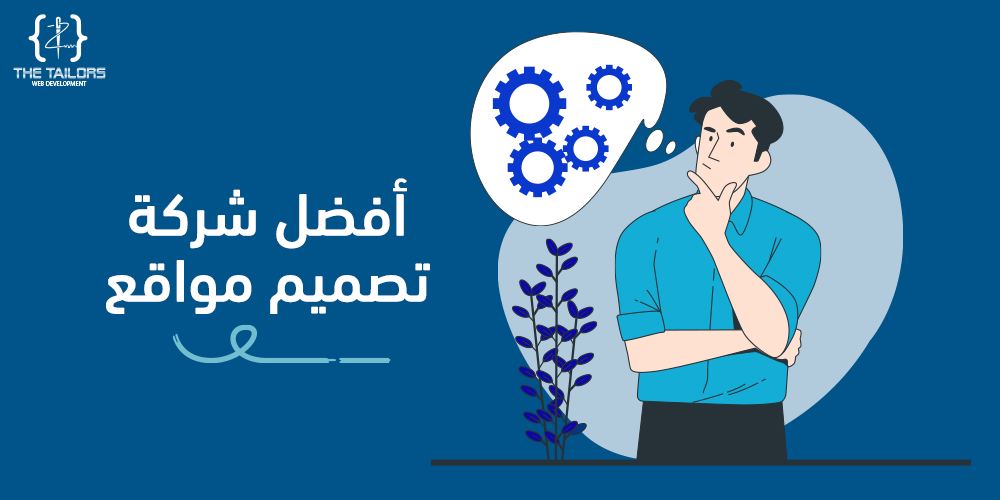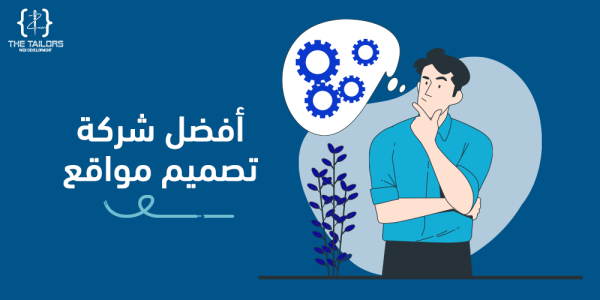Website design
If you are thinking of creating a website, the design of the website is one of the main factors that determine its success. When the design is good, it attracts users and increases the chances of keeping them on the site and completing the required operations.
Website design involves a lot of different processes and steps, from page layout and front-end design to back-end programming and development.
In this article, we will talk briefly about the website design process and the factors that must be considered to ensure the success of the website. We'll also cover some tips and tricks that can help you design an attractive and effective website.
What is web design?
Website design is the process of creating Internet pages that are displayed on electronic browsers. Website design is an important part of the website creation process and includes planning, design, implementation and maintenance.
Website design can be defined as the process of creating the graphic, structural and functional design of web pages using various programming languages.
The website design aims to improve user experience and provide easy and efficient access to the content and information presented on the website.
The website design process includes many aspects, such as front-end design, database design, and the selection of appropriate technologies and tools to achieve the desired goals.

The basics of any website
The main points on which any website is based can be summarized as follows:
1. Visual Identity: The website must have a distinct and attractive visual identity that reflects the personality and content of the website.
2. Good design: The graphic design of the site must be consistent and attractive, with appropriate use of colors, fonts, and images.
3. Good content: The website should have good, useful and easy-to-understand content, and the content should be organized in a logical and easy-to-use manner.
4. User Experience: The website should be designed in a way that makes it easy for users to access the required content easily, and it must provide an easy-to-use interface suitable for all types of users.
5. Security and protection: Strong security measures must be in place to protect the site and user data, and international security standards must be adhered to.
6. Speed and Performance: The site's loading speed and overall site performance must be improved to improve user experience and increase chances of staying on the site.
7. Compatibility: The website must be designed in a way that is compatible with different operating systems, browsers and different devices.
8. E-marketing: The website must be designed in a way that allows it to appear better in search engines and improve SEO to increase visits and conversions.
Types of websites
There are many types of websites and they can be classified based on several criteria, including:
1. E-commerce sites: These are sites that sell and buy products and services over the Internet. Such sites include Internet stores and websites of companies that provide services via the Internet.
2. News and media sites: These are sites that provide news and information that are updated and updated continuously. Such sites include news sites and media sites.
3. Education and training sites: These are sites that provide information, lessons and training courses via the Internet. Such sites include educational sites, training sites and e-learning.
4. Government and public services websites: These are websites that provide public services and government and public sector information. Such websites include government services websites and public websites.
5. Entertainment and entertainment sites: These are sites that provide entertainment, entertainment and games content over the Internet. Such sites include gaming sites, movies, series and music sites.
6. Social networking sites: These are the sites that allow users to communicate and interact with each other via the Internet. Such sites include Facebook, Twitter, Instagram, and others.

Classification of websites based on the nature of the content
Websites can be classified based on the nature of the content and the functions they provide, and these types can be explained as follows:
Static content sites: They are sites that contain static content and are static in nature, and are usually used to display static information and static content such as static pages, articles, images, videos, and others.
These websites are usually designed with simple techniques, and the content is often updated periodically.
2. Sites with interactive content: These are sites that allow users to interact with the content and the site directly, and provide multiple functions and dynamic and constantly changing content. Such sites include gaming and entertainment sites, social networks, forums, and others. They are usually built using dynamic programming languages such as PHP and JavaScript.
3. Responsive sites: These are sites that are compatible with different displays and different devices and adapt to the screen size used, allowing users to easily access content on any device.
Responsive website design is important today, as more and more devices and screen sizes are used by users to access the Internet. These websites use custom design techniques like Bootstrap and CSS Grid.
Tips for designing an attractive website
Designing an attractive and user-friendly website depends on many factors, and among the tips that can be followed to design an attractive website are:
1. Focus on user experience: The site should be easy to use and allow users to access content easily and quickly.
2. Simple and clear design: The design of the website should be simplified and made clear and simple so that the content is well visible and easily accessible.
3. Use colors and text appropriately:
Colors and texts must be used appropriately and attractively, and the consistency of colors and design in general must be ensured.
4. Optimize loading speed: Care should be taken to improve loading speed and make the site responsive for a smooth and enjoyable user experience.
5. Use images and videos well: Images and videos can be used to grab users' attention and make the website design more attractive.
6. Responsive website design: The website design must be responsive to different devices, in order to ensure a good user experience on any device.
7. Providing high-quality content: High-quality and useful content must be provided to users, as this matter can be effective in attracting more visitors to the site.
8. Verify security and privacy: Users must be verified to provide appropriate security and privacy, in order to make them feel confident when using the site.
9. Attention to detail: You must pay attention to the small details in the design of the site and ensure that there is a balance between the different elements of the site.
10. Listening to feedback and comments: Users' feedback and comments on the site must be listened to and used to improve the user's experience on the site.
success factors of any website
There are several factors to consider to ensure the success of a website, including:
1- Design: The design must be simple and pleasing to the eye, and it must be compatible with the type of site and its target audience.
2- Speed: The site should be fast loading and responsive for a smooth and enjoyable user experience.
3- Attention to user experience: The site must be easy to use and facilitate access to content quickly and easily.
4- Responsiveness to mobile devices: The site must be responsive to mobile devices and tablets, in order to ensure a good user experience on any device.
5- Search Engine Optimization: The site must be optimized for search engines to increase the chances of appearing in search results on the Internet.
6- Linking to social media: The site must have tools for participation on social media to increase awareness of the site and interact with the public.
In short, and in conclusion, it can be said that website design requires attention to many different factors to ensure the success of the site and its attractiveness to users, and must focus on user experience, simplify the design and make it clear and simple, improve loading speed, provide high quality content, responsive website design, and attention to detail Small, by following these tips and taking into account these factors, you can design an attractive and successful website that attracts visitors and maintains its success in the long run.

 العربية
العربية